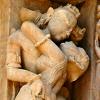Sign in to follow this
Followers
0

Taoist Anima-Shakti - is there such a thing?
By
yabyum24, in Daoist Discussion

By
yabyum24, in Daoist Discussion